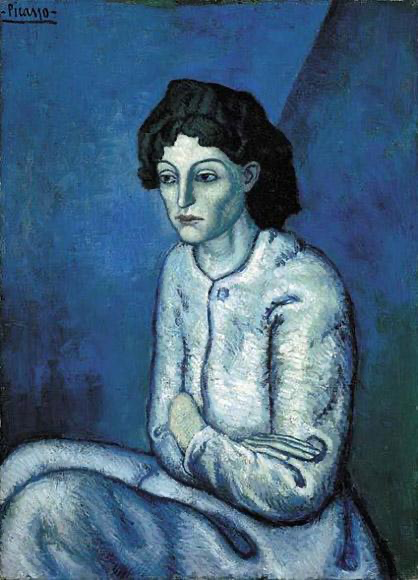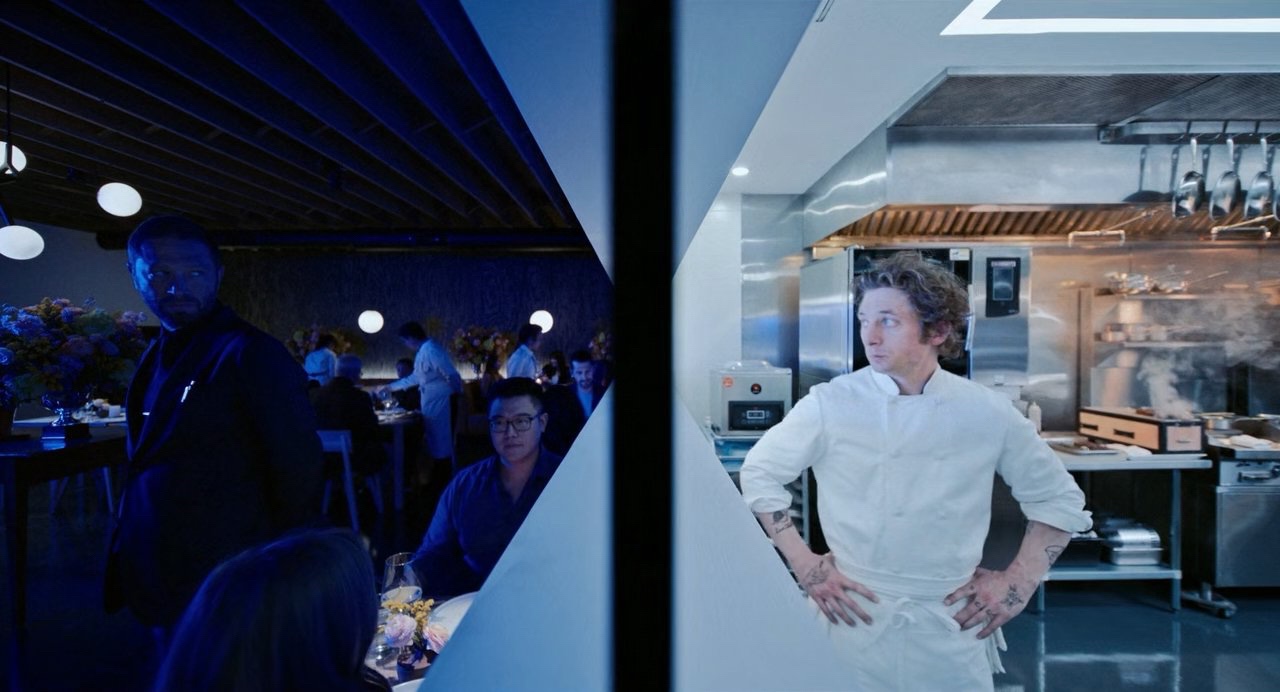What do The Bear and Picasso’s Blue Period have in common? I’ll explain.
I’ve always loved the relationship between form and function in art. One of my favorite examples is the opening to the original Halloween movie. We start with the first-person perspective of Michael Myers outside a house, watching a couple inside. He then sneaks into the darkened home, into the kitchen, opens a drawer, and pulls out a knife, before continuing deeper. It forces viewers to feel like they’re the ones watching, entering, picking up a knife. Which can be unsettling and provocative.
In poetry and literature, the author might use shorter, faster sentences to match the pace of an emotion or action. Poets often use line breaks to add a physicality to what they’re talking about. A quick example.
You asked me
to hold on
to us
to promise I would
never let goBut that’s just not
who I am
The second stanza creates a separation between the request to stay together and the speaker’s distance. A love poem might maintain a single stanza in order to capture the unity of the relationship.
In painting, you have artists like Rothko who use colors and shape to capture complex emotions that viewers can struggle to put into words. You feel the painting. The same with Picasso’s Blue Period where the tinge matched the artist’s depression.

Usually, the marriage of form and function is a demonstration of artistic technique. But not always. For example, The Walking Dead television show.
When The Walking Dead got started, it was a zombie survival story that had all the patience and quality expected of an AMC show following the success of Breaking Bad. But then it kept going and going. For 11 total seasons. A spin-off series, Fear the Walking Dead, ran for 8 seasons. That led to a whole extended universe with six other series, three of which are still live as of 2024. The Walking Dead franchise has become a zombie, something that just won’t stop and keeps crawling along, no matter how dead it seems.
I love that so much. The irony is sublime.
And then you have The Bear. In the first season, Carmy returns to Chicago to take over the sandwich shop owned by his recently departed brother. The place is a hole in the wall that makes great beef sandwiches thanks to the lovable misfits who work there. Carmy’s an important chef and wants to run the place like a proper restaurant. Shenanigans ensue as worlds collide and we get this dramatic, endearing, and poignant underdog story that was unanimously beloved.
Season two, the sandwich shop is done, and everyone prepares to get the new fine dining restaurant up and running. And then season three of The Bear happens and we’re in a fine dining restaurant. And the entire tone of the show is different. It’s no longer a low stakes thing where a grieving guy tries to rally a group of people to make some delicious beef sandwiches and we love them all for trying. Instead, everyone is angry and stressed or blissfully idiotic (those Fak fellas).
And the form follows suit. The Bear’s third season is much more “artistic” than the previous entries. The first episode is a 27-minute montage of Carmy’s journey as a chef. It’s all flowy sequences under an ambient Trent Reznor/Atticus Ross score. Those are the guys who score David Fincher and Luca Guadagnino movies. It’s cool that they’re scoring episodes of The Bear but it’s also a symptom of season three trying to elevate itself.
That’s also why the finale features long stretches of real chefs telling stories about the soul of the restaurant and the heart of a chef, two things Carmy may have lost sight of. Despite how relevant that is to the main character, it’s also the existential conflict that you expect from, well, a David Fincher or Luca Guadagnino movie. And feels almost like a “We’re doing this because we can” kind of moment rather than “We’re doing this because we should”.
The Bear season one had the lovable energy of the little-sandwich-shop-that-could. And season two lost a little bit of that innocence and fun as it introduced more existential challenges for the cast. And then the third season is devoid of the charm the show once had, falling into the same traps as Carmy with the restaurant. It’s ironic, then, that the show ends with Carmy receiving what seems to be a negative review from The Chicago Tribune, because what’s said in the review almost feels self-aware:
confusing, almost sloppy, innovative, complex array, palpable dissonance, chef’s brilliant, disappointed and craving, inconsistent, felt overdone, stale talent
So much of the third season of The Bear felt like self-parody to me. When, I know, that was not the intention. The intention was, as it should be, to make something splendid. Unfortunately, I agree with the show’s own review, and that makes The Bear one of the best examples of form and function (going wrong) that I’ve ever seen.
Film Colossus ranks the best TV shows of all-time
If you want to read Chris’s all-time TV rankings.

